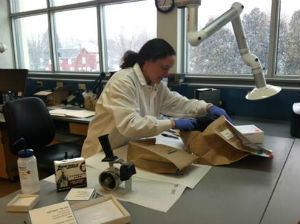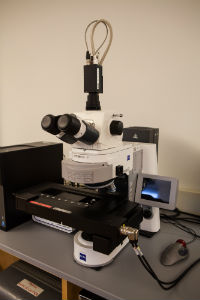Physical, chemical, and biological tools are used to examine evidence for the presence of body fluid stains. These probative stains are then documented, collected, and preserved for DNA testing, if needed.

First, items are thoroughly examined for their physical characteristics and to determine what stains merit additional testing. While many stains are visible to the naked eye, some stains are difficult to discern. An alternate light source may be used to enhance visualization of the evidence and locate potential stains of interest. After locating stains, additional chemical and biological testing may be performed.
Serology FAQs
Do non-reported Sexual Assault Evidence Kits (SAEKs) or cases no longer being pursued need to be submitted to the laboratory?
Yes. All Sexual Assault Evidence Kits collected must be submitted to the laboratory for tracking purposes.
What is a preliminary examination of SAEKs and when are they done?
A preliminary examination of SAEKs is a limited examination where select items within the SAEK are tested. This type of examination is performed on non-reported SAEKs. If the case status of the non-reported SAEK changes, the remaining untested items in the kit may be resubmitted to the laboratory for additional testing.
What is PSA and what do PSA positive results indicate?
PSA is prostate specific antigen, which is a biological component of seminal fluid. This protein may be found in other body fluids; however, it is present at significantly higher levels in seminal fluid. In body fluid identification, the presence of this component (in conjunction with a positive chemical test) is particularly useful in the absence of spermatozoa when attempting to identify a suspected seminal fluid stain.


